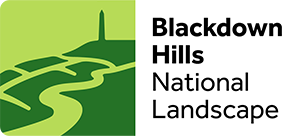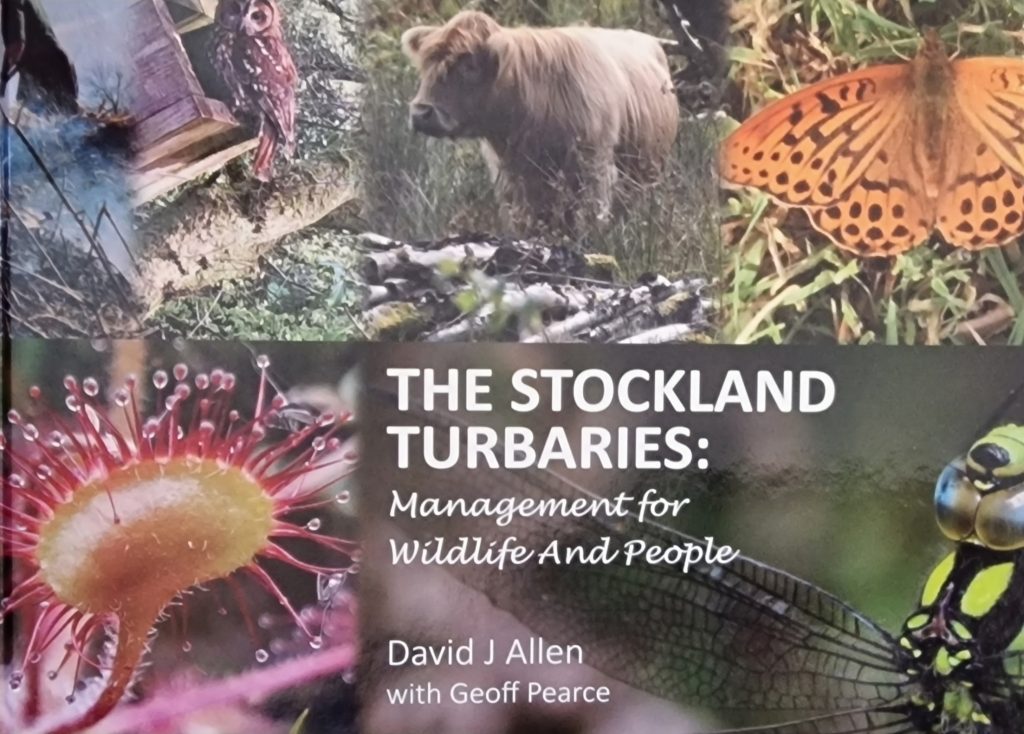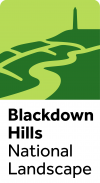Stockland Turbaries: management for wildlife and people
The Stockland Turbaries – a string of seven irregularly-shaped parcels of land scattered across the parish of Stockland, from Bucehayes Common to the west of the Stockland Straight, to Horner Hill, deep in the Yarty valley – represent much of what is best about the Blackdown Hills. Not only do they harbour a remarkable diversity of wildlife, but they have emerged out of a deep history which illustrates much about the social realities of this landscape. And latterly, they have become a focus of much community effort, through the commitment of a handful of Stockland residents who recognise the value of this unusual parish-owned resource.
David Allen has been a much-liked and respected source of botanical wisdom on the Blackdown Hills for many years and has had a life-long relationship with the Turbaries. He has now created a valuable testament to that relationship in the form of a book, The Stockland Turbaries: Management for Wildlife and People, written with the assistance of local ornithologist Geoff Pearce. It’s a lovely book, combining a deep ecological knowledge of the intimate landscapes of the Turbaries, with a historical context for their existence, and a record of a community’s efforts over the last thirty years to maintain them for the benefit of the parishioners of Stockland.
Turbaries provide a window into a medieval landscape, and in some ways are a memorial to the dispossessed of the past. They exist where land too agriculturally-poor for farming became customarily used by financially poor parishioners as a source of fuel and materials. These customs were formalised in the early nineteenth century when 165 acres of turbary land in Stockland were awarded to the Churchwardens and Overseers of the Poor. The manorial rights were acquired by David Allen’s grandfather in 1925, who gifted the land to Devon County Council in 1952. Devon County Council in turn passed ownership to Stockland Parish Council in 1995.
There has been a particularly close relationship between the Stockland Turbaries and the Blackdown Hills Area of Outstanding Natural Beauty (AONB), dating right back to the inception of the AONB in the early 1990s. Dave Dixon, the first AONB Manager, occupied the AONB’s first office right in the middle of Stockland village, when the AONB was referred to as the Blackdown Hills Project. A meeting in that office in 1995 led to the creation of a sub-committee of the Parish Council to oversee the management of the Turbaries, and the AONB has had a place on that committee ever since.
David Allen and his fellow turbary committee members have shouldered the considerable responsibility of looking after the Turbaries in the intervening years, with much support initially from the Devon Wildlife Trust, and subsequently from the RSPB. Funding has been obtained through several incarnations of state support for environmentally-appropriate land management, starting with the Environmentally Sensitive Area scheme in the late nineties, progressing through the Lottery-funded Tomorrow’s Heathland Heritage programme, to a Higher Level Stewardship agreement over the last decade or so.
Aside from the money, which has paid for fencing, scrub clearance and many other practical interventions, the most important resource for the Turbaries has been human voluntary labour. As well as being hard work, the process of managing this type of land is a constant matter of experimentation, adjustment, reflection, changes of tack, and monitoring to try and ensure the Turbaries retain and increase their wildlife value, and their value to local people.
It’s a fact of life that the huge amount of love and energy that some members of local communities invest in looking after their localities often goes unacknowledged. We as human beings are often more conscious of what is amiss in our immediate environment, than of what is good and special. Special landscapes take a lot of special care, and that care is often unnoticed.
There can be few comparable examples of a parish council taking responsibility for as rich and fascinating a land holding on behalf of its parishioners and succeeding to navigate the ever-changing world of nature conservation and land management finance for nearly three decades. The whole of the Blackdown Hills community has much to learn from David and his colleagues, and this book is a fitting record of their work so far – long may it continue.
Copies of the book can be obtained by contacting David Allen: 01404 861394 / leo@leoallen.plus.com, or from The Kings Arms pub in Stockland: 01404 881686.






